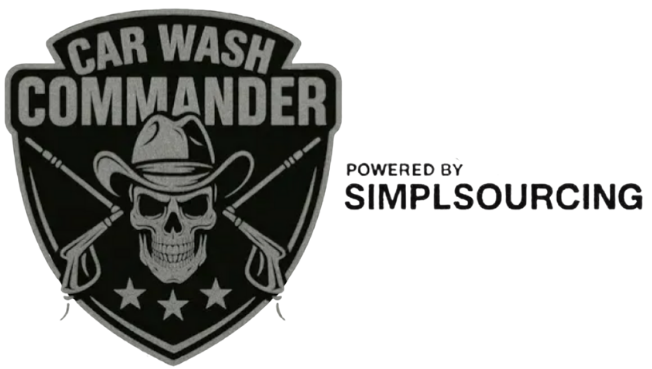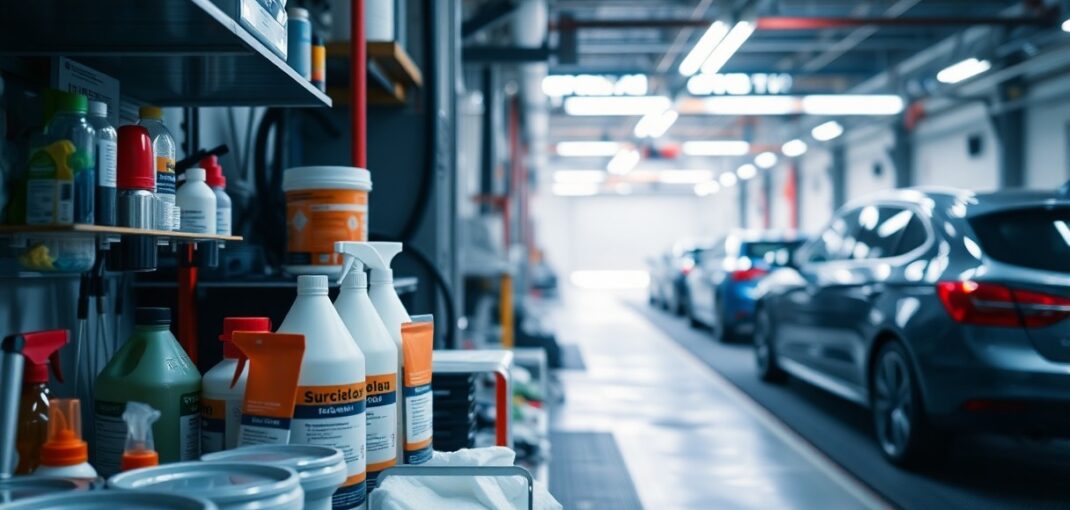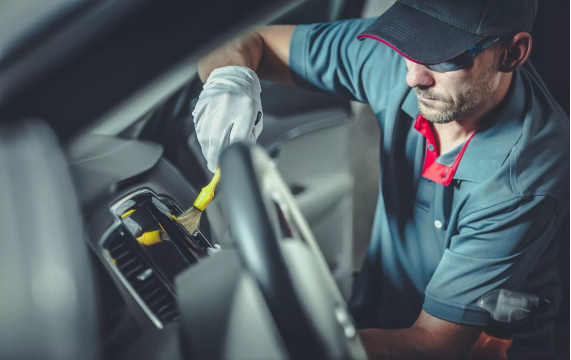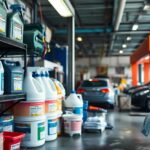Costs associated with running a car wash can quickly add up, impacting your bottom line. In this guide, you’ll discover effective strategies for reducing supply expenses while maintaining the high-quality service your customers expect. You will learn how to evaluate your current suppliers, explore alternative products, and implement best practices that ensure profitability without compromising customer satisfaction. Streamlining your operations not only helps your financial health but also enhances your reputation in a competitive market.
Understanding Car Wash Profitability
Profitability in the car wash industry hinges on various elements you must navigate skillfully. Understanding how to balance costs, pricing, and service quality directly influences your bottom line. Key insights into financial performance can help you identify areas for improvement and boost your revenue streams. Focusing on crucial metrics will illuminate your operational efficiency and assist in making data-driven decisions that enhance profitability.
Key Financial Metrics
Monitoring key financial metrics is vital for gauging your car wash’s performance. Metrics such as average ticket price, labor costs, and customer retention rate provide insights into your profitability landscape. Regularly analyzing these figures allows you to pinpoint strengths and weaknesses while guiding your operational strategies toward increased revenue.
Factors Influencing Profit Margins
Several factors significantly impact your profit margins in the car wash business. Overhead costs, the efficiency of your operations, and service pricing all play pivotal roles. Additionally, the quality of your service and customer experience can directly affect repeat business and referrals, which are crucial for maintaining a healthy profit margin. Understanding these factors empowers you to make informed adjustments to maximize profitability.
- Overhead costs, including rent, utilities, and employee wages.
- Operational efficiency, which impacts labor and materials usage.
- Service pricing aligned with market demand and competition.
- Quality of service driving customer loyalty and referrals.
- Marketing expenses and their return on investment.
Knowing these factors enables you to make strategic decisions to enhance your profit margins.
Balancing these elements effectively can determine the financial health of your car wash. For instance, investing in more efficient equipment can reduce the labor needed per wash, directly conserving operating costs. Similarly, creating tiered service levels might attract more customers willing to pay a premium for enhanced services. Tracking and analyzing these operational choices will inform your strategy moving forward.
- Investing in efficient equipment reduces long-term costs.
- Implementing loyalty programs encourages repeat visits.
- Streamlining staff responsibilities can cut labor costs.
- Identifying and targeting high-value customer segments.
- Continuous training for your team enhances service quality.
Knowing how to leverage these factors effectively can lead to sustainable profit growth in your car wash business.
Supply Costs in the Car Wash Industry
Supply costs represent a significant portion of your operational expenses in the car wash industry. From cleaning chemicals and waxes to maintenance supplies and equipment, managing these costs is necessary for maintaining healthy profit margins. Fluctuating prices due to market conditions and supplier relations can impact your budgeting strategy, making it vital to keep a close eye on your expenditures and identify potential efficiencies.
Common Supply Expenses
Your primary supply expenses often include detergents, waxes, polishes, towels, and equipment parts. Bulk purchasing of cleaning products can help reduce costs, while regular maintenance of your car wash equipment prevents costly repairs. Tracking the usage and efficiency of each supply item allows you to pinpoint where savings can be achieved, optimizing overall expenditure.
Strategies for Cost Reduction
Implementing cost reduction strategies involves evaluating supplier relationships, negotiating better prices, and exploring alternative products. Assessing your supply chain for inefficiencies and consolidating purchases can lead to significant savings. You may also consider investing in more durable equipment that reduces frequent replacements and downtime.
Establishing long-term partnerships with suppliers can yield discounts and better payment terms, enhancing cash flow. Seek out alternative brands or bulk purchasing options that maintain quality but offer lower prices. Periodically review your inventory management to minimize waste and overstock, ensuring that you purchase only what you need, when you need it. By strategically analyzing material usage and supplier performance, you can discover opportunities for savings without compromising quality. Successful car wash owners often conduct annual reviews of their supply costs and implement competitive bidding processes to continuously refine their supply chain efficiency.
Quality vs. Cost: Finding the Balance
Striking a balance between quality and cost is crucial for optimizing your car wash’s profitability. Cutting back on costs may tempt you to compromise on the level of service, but doing so can jeopardize customer satisfaction and retention. Instead, focus on strategic adjustments that enhance efficiency without sacrificing the standards your customers expect.
Importance of Maintaining Service Quality
Maintaining high service quality builds customer loyalty and drives repeat business. Customers often equate a clean, well-maintained vehicle with the quality of service received. Even a slight decrease in quality can lead to negative reviews and a tarnished reputation, making it vital to adhere to established standards consistently.
Cost-Effective Quality Solutions
Finding cost-effective solutions to maintain quality can set your car wash apart from competitors. Investing in bulk purchasing of cleaning supplies, exploring partnership deals with suppliers, and utilizing technology to streamline operations can help you achieve quality standards while keeping costs manageable. For example, switching to eco-friendly products can foster customer loyalty and appeal to a growing demographic concerned with sustainability.
Implementing cost-effective solutions doesn’t mean resorting to cheap alternatives. Instead, focus on optimizing your current supplies and operations. For instance, consider using waterless car wash products that not only save water but also reduce labor costs. Regular training for employees can improve their efficiency and enable them to deliver top-notch service, ensuring that even if you cut costs, you won’t sacrifice the customer experience. Embracing technology, like automatic systems for easier operations, can further drive down labor costs while enabling faster service without compromising quality.
Efficient Supply Chain Management
Effective supply chain management is vital for maximizing profits while maintaining service quality. Streamlining your procurement processes can help reduce costs significantly. By analyzing your current supply chain and identifying inefficiencies, you can implement strategies to negotiate better terms with suppliers and minimize waste. Establishing a direct relationship with manufacturers can lead to cost savings and more reliable service, ultimately enhancing your car wash’s profitability.
Choosing the Right Suppliers
Selecting reliable suppliers is vital for maintaining high-quality products and services. Look for suppliers that provide not only competitive pricing but also consistent, high-quality materials that meet your business’s specific needs. Establishing long-term relationships with a select few suppliers can lead to volume discounts and better customer service, ensuring you have what you need when you need it.
Implementing Inventory Management Systems
Inventory management systems enable you to track supplies efficiently, helping to prevent stockouts and overstock situations. Utilizing technology to monitor inventory levels in real-time can optimize ordering processes, ensuring you always have the right amount of cleaning supplies on hand, without tying up too much capital in stock. This system enhances your operation’s efficiency and helps maintain cash flow.
Implementing an effective inventory management system can transform how you manage supplies in your car wash. Software solutions that analyze usage patterns and forecast demand can alert you to reorder supplies at the optimal time, reducing the chances of excess inventory. By categorizing products into fast-moving and slow-moving items, you can prioritize stock levels accordingly, minimizing waste and maximizing profitability. Real-time tracking allows you to respond swiftly to unexpected changes, ensuring that your car wash operates smoothly without disruptions.
Innovative Technologies and Techniques
Leveraging innovative technologies can significantly enhance your car wash’s profitability while maintaining high standards. The integration of advanced systems offers ways to streamline operations, reduce waste, and improve customer satisfaction. By adopting the latest techniques, you can drive growth, minimize supply costs, and meet the demands of eco-conscious consumers.
Automation in Car Wash Operations
Implementing automation not only increases efficiency but also reduces labor costs. Robotic systems and automatic payment kiosks minimize the need for staff, allowing you to focus on enhancing customer experience. Additionally, automated wash systems optimize water and detergent usage, improving sustainability and lowering expenses.
Eco-Friendly Products and Practices
Utilizing eco-friendly products is crucial for modern car washes aiming to attract environmentally conscious customers. Opt for biodegradable soaps and waterless wash solutions that maintain quality without harming the planet. These products not only preserve your wash’s effectiveness but also improve your brand image and appeal to a broader clientele.
Eco-friendly practices extend beyond product selection. By adopting water reclamation systems, you can recycle water and reduce consumption significantly, often reclaiming up to 80% of used water. Additionally, solar panels can power your operations, decreasing energy costs and contributing to sustainable practices. Highlighting these initiatives in your marketing can draw customers who prioritize environmental responsibility, giving you a competitive edge in a crowded marketplace.
Case Studies: Successful Cost-Cutting Strategies
Exploring real-world case studies highlights effective cost-cutting strategies in the car wash industry. Analyze how top performers achieved profitability by streamlining operations and leveraging technology without compromising quality.
- ABC Car Wash increased profit margins by 20% by adopting water recycling systems, reducing water costs by 50%.
- XYZ Auto Spa reduced supply costs by 30% through bulk purchasing agreements, resulting in an overall annual savings of $15,000.
- Clean & Shine implemented a digital management system, cutting labor costs by 15% while increasing throughput by 25%.
- Sunny Day Car Wash enhanced customer retention by 40% by introducing subscription models, leading to predictable revenue streams and reduced churn.
For further insights on Profit and Cost per Car for Car Wash Businesses, explore additional resources and strategies.
Examples from Top Performers
Top performers in the car wash sector demonstrate that strategic investment in technology and customer service pays off. For instance, the Green Wash chain saw a 35% reduction in operational costs by utilizing eco-friendly cleaning solutions paired with automated wash technologies, which simultaneously boosted customer satisfaction and loyalty.
Lessons Learned from Mistakes
Common pitfalls often reveal critical lessons for improving profitability. Miscalculations in inventory management can lead to excess supply costs that erode profit margins. One case involved a regional chain that overstocked products, which not only wasted finances but also storage space, highlighting the need for precise inventory controls and demand forecasting.
Adjusting operational strategies in response to missteps can yield significant rewards. The regional chain’s failure taught the importance of data-driven inventory management and the necessity of regular audits. Subsequently implementing just-in-time ordering reduced excess stock levels by 40%, allowing for better cash flow and increased investments in services that actually drove customer retention and satisfaction. This experience reinforced that learning from errors can lead to substantial long-term benefits, ultimately enhancing overall profitability.
Summing up
Drawing together the insights from “Car Wash Profitability 101 – Cut Supply Costs Without Sacrificing Quality,” you can enhance your business’s bottom line by strategically managing your supply expenses. By researching alternative product suppliers, negotiating bulk deals, and focusing on efficient operational practices, you can reduce costs while maintaining high service standards. Implementing these strategies will not only contribute to your profitability but also ensure customer satisfaction, fostering long-term loyalty and success for your car wash.







